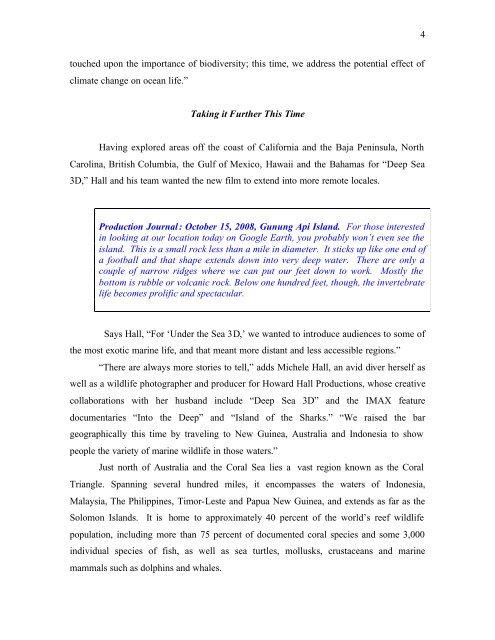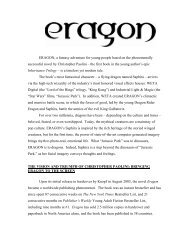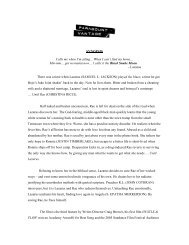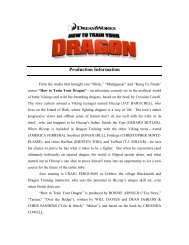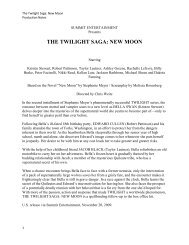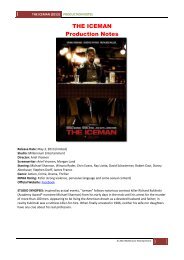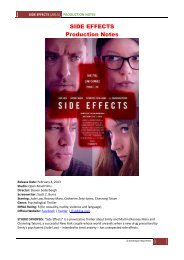Award-winning documentary filmmaker Howard ... - Visual Hollywood
Award-winning documentary filmmaker Howard ... - Visual Hollywood
Award-winning documentary filmmaker Howard ... - Visual Hollywood
You also want an ePaper? Increase the reach of your titles
YUMPU automatically turns print PDFs into web optimized ePapers that Google loves.
4touched upon the importance of biodiversity; this time, we address the potential effect ofclimate change on ocean life.”Taking it Further This TimeHaving explored areas off the coast of California and the Baja Peninsula, NorthCarolina, British Columbia, the Gulf of Mexico, Hawaii and the Bahamas for “Deep Sea3D,” Hall and his team wanted the new film to extend into more remote locales.Production Journal: October 15, 2008, Gunung Api Island. For those interestedin looking at our location today on Google Earth, you probably won’t even see theisland. This is a small rock less than a mile in diameter. It sticks up like one end ofa football and that shape extends down into very deep water. There are only acouple of narrow ridges where we can put our feet down to work. Mostly thebottom is rubble or volcanic rock. Below one hundred feet, though, the invertebratelife becomes prolific and spectacular.Says Hall, “For ‘Under the Sea 3D,’ we wanted to introduce audiences to some ofthe most exotic marine life, and that meant more distant and less accessible regions.”“There are always more stories to tell,” adds Michele Hall, an avid diver herself aswell as a wildlife photographer and producer for <strong>Howard</strong> Hall Productions, whose creativecollaborations with her husband include “Deep Sea 3D” and the IMAX featuredocumentaries “Into the Deep” and “Island of the Sharks.” “We raised the bargeographically this time by traveling to New Guinea, Australia and Indonesia to showpeople the variety of marine wildlife in those waters.”Just north of Australia and the Coral Sea lies a vast region known as the CoralTriangle. Spanning several hundred miles, it encompasses the waters of Indonesia,Malaysia, The Philippines, Timor-Leste and Papua New Guinea, and extends as far as theSolomon Islands. It is home to approximately 40 percent of the world’s reef wildlifepopulation, including more than 75 percent of documented coral species and some 3,000individual species of fish, as well as sea turtles, mollusks, crustaceans and marinemammals such as dolphins and whales.


